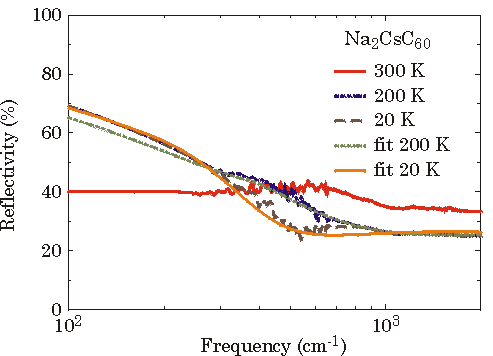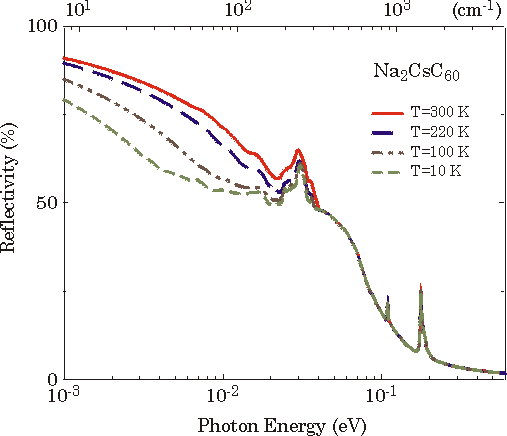Optical properties of Na2CsC60

Among the families of superconducting alkali fullerides, the Na2AC60 (A = Rb, K, Cs) family displays puzzling behaviours. Particularly the much steeper increase of the superconducting transition temperature Tc versus the interfullerene spacing a with respect to the situation in A3C60 has not been found a satisfactory and comprehensive explanation yet. Moreover, it is quite well established that the Tc vs a dependence in Na2AC60 cannot be reconciled solely with a much stronger dependence of the density of states (DOS) at Fermi level N(EF) on a than in A3C60. The assumption that alkali atoms act only to expand the lattice is not supported by the experimental results. This also suggests that there is a specific alkali ions effect on N(EF). We compared the magnetic susceptibility and the optical response between Na2CsC60 and K3C60. We found that at high temperatures, where both A3C60 and Na2CsC60 are in the fcc phase, Na2CsC60 is in an insulating phase (Fig. 2.2). This is quite in contrast to the expectation. In fact, Na2CsC60 has larger bandwidth than A3C60 and therefore it should be less prone to correlation effects. The mobility of the small Na+ possibly plays an essential role. We have suggested that a Mott-Jahn-Teller insulating state combined with a (static) charge dissociation in C602- and C604- might lead to an insulating state for a nominal C603- fullerides.

Another characteristic of the Na2AC60 family is the formation of a single-bond polymerized phase, depending whether one applies pressure and/or from the cooling rate. We also focused our attention on the polymerized phase, which develops in Na2CsC60 by solely applying pressure. The polymerization is supposed to induce a quasi-one-dimensional (1D) electronic structure, which is quite sensitive to one-dimensional instabilities because of the Fermi surface nesting. We were motivated to optically investigate such phase and compare it with the double-bond polymerized phase encountered in the AC60 alkali intercalated fullerides. We found a progressive metal-semimetal crossover in our optical properties, mainly represented by the suppression of the Drude component (Fig.2.3). We have noticed the quite striking similarity with the optical properties of the AC60 family, which was also investigated by us a few years ago.